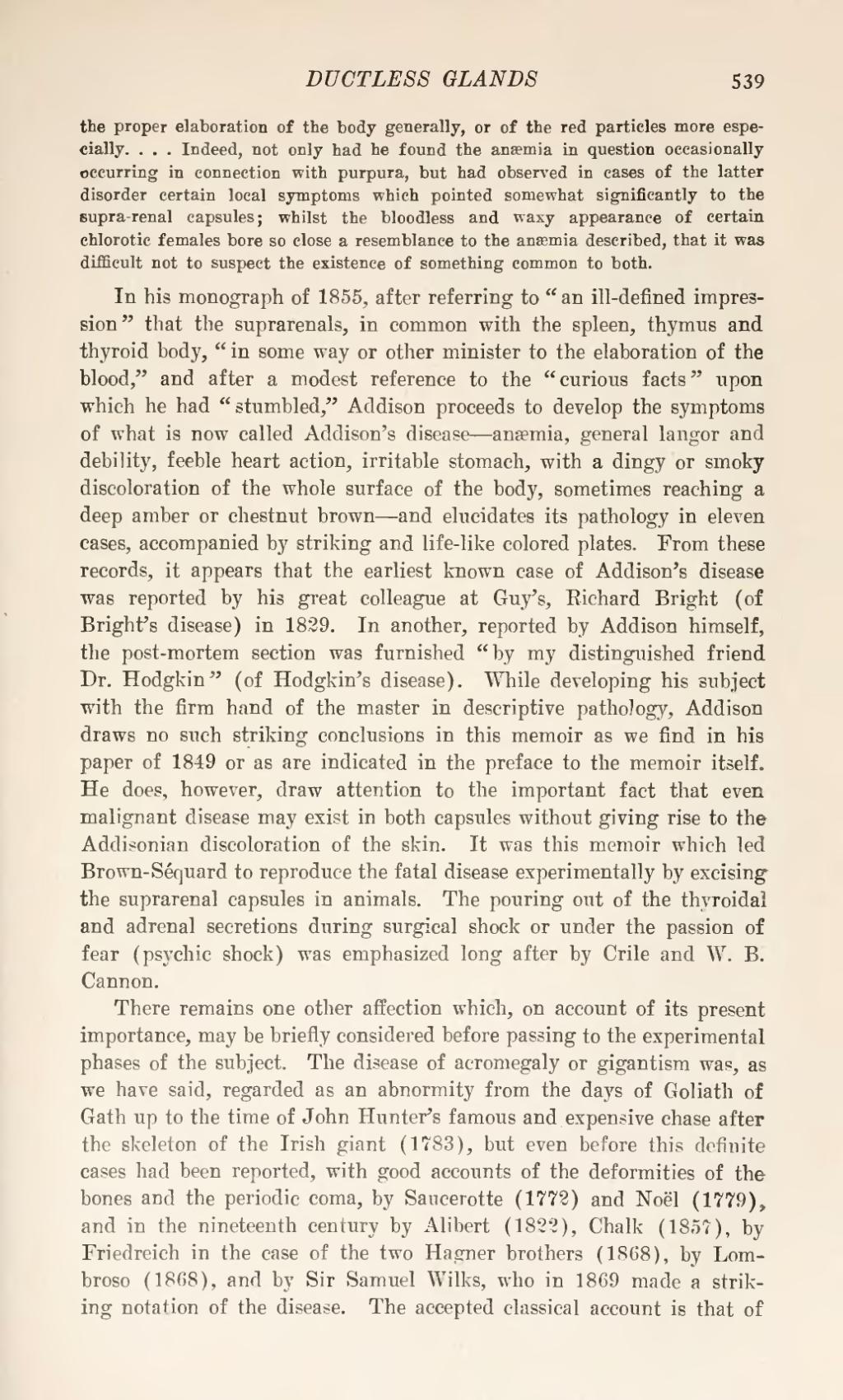In his monograph of 1855, after referring to "an ill-defined impression" that the suprarenals, in common with the spleen, thymus and thyroid body, "in some way or other minister to the elaboration of the blood," and after a modest reference to the "curious facts" upon which he had "stumbled," Addison proceeds to develop the symptoms of what is now called Addison's disease—anæmia, general langor and debility, feeble heart action, irritable stomach, with a dingy or smoky discoloration of the whole surface of the body, sometimes reaching a deep amber or chestnut brown—and elucidates its pathology in eleven cases, accompanied by striking and life-like colored plates. From these records, it appears that the earliest known case of Addison's disease was reported by his great colleague at Guy's, Richard Bright (of Bright's disease) in 1829. In another, reported by Addison himself, the post-mortem section was furnished "by my distinguished friend Dr. Hodgkin" (of Hodgkin's disease). While developing his subject with the firm hand of the master in descriptive pathology, Addison draws no such striking conclusions in this memoir as we find in his paper of 1849 or as are indicated in the preface to the memoir itself. He does, however, draw attention to the important fact that even malignant disease may exist in both capsules without giving rise to the Addisonian discoloration of the skin. It was this memoir which led Brown-Séquard to reproduce the fatal disease experimentally by excising the suprarenal capsules in animals. The pouring out of the thyroidal and adrenal secretions during surgical shock or under the passion of fear (psychic shock) was emphasized long after by Crile and W. B. Cannon.
There remains one other affection which, on account of its present importance, may be briefly considered before passing to the experimental phases of the subject. The disease of acromegaly or gigantism was, as we have said, regarded as an abnormity from the days of Goliath of Gath up to the time of John Hunter's famous and expensive chase after the skeleton of the Irish giant (1783), but even before this definite cases had been reported, with good accounts of the deformities of the bones and the periodic coma, by Saucerotte (1772) and Noël (1779), and in the nineteenth century by Alibert (1822), Chalk (1857), by Friedreich in the case of the two Hagner brothers (1868), by Lombroso (1868), and by Sir Samuel Wilks, who in 1869 made a striking notation of the disease. The accepted classical account is that of
